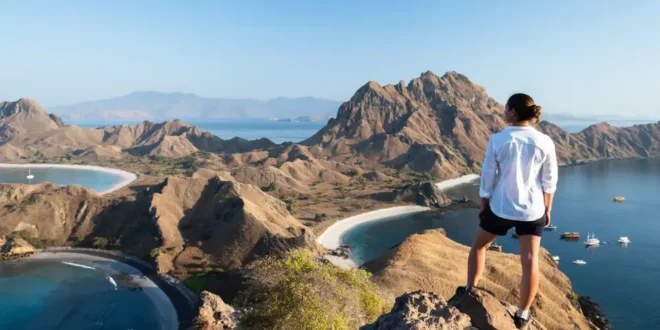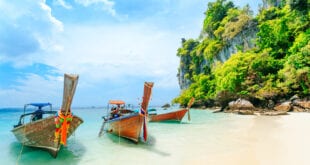If you’ve visited Bali and felt both enchanted and a little overwhelmed by the crowds, the slick resorts, and the well-worn selfie spots, then you’re ready for something different. The islands east of Bali, less polished, more elemental, are a kind of paradise built on wild rhythm, local authenticity, and the edge of discovery.
Here you’ll find volcanic ridges, coral gardens untouched by hype, and small villages where time seems to move at a different pace. This is not the Bali you already know, but the Indonesia you’ll want to see.
The easiest route into Indonesia’s quieter east is by taking a Bali to Komodo yacht charter, which connects well-known Bali with untouched islands scattered across the Flores Sea. Think turquoise bays, dragons on dragon-islands, and snorkeling so clear you can count the colors of the fish.
Below are three Eastern Indonesian gems that shift what paradise means: not just a beach and a cocktail, but culture, nature, and surprise.
1. Flores and the Komodo National Park Region
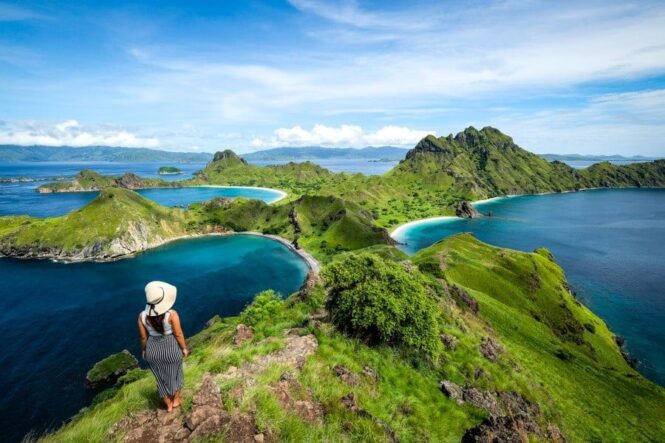
Flores and the neighboring Komodo islands are still wild enough to thrill: rugged coastlines, limp-volcano silhouettes at dusk, and the fierce presence of the famed dragons in Komodo National Park.
What makes it extraordinary
- You can hike up to the ridges of Padar Island to see three different beaches, from white to black to pink sand, sprawled like a palette.
- The national park is a UNESCO site and home to the world’s largest lizard, the Komodo dragon, though the true magic often happens underwater: coral gardens, manta rays, shimmering schools of fish.
- The gateway town, Labuan Bajo, gives you a mix of fishing-village charm and the infrastructure to make this remote area accessible.
How to experience it
You could stay in Flores for a few nights, but why not let the sea do the work? Hop aboard a boat after Bali, sail across, dock under stars, wake up to a new bay each morning. Slow. Quiet. Unexpected.
Travel tip: Go in the dry season (around May to October) when visibility is best for diving/snorkeling and the heat is intense but bearable. Rainy season means fewer crowds, but more clouds and some choppy seas.
2. The Wakatobi National Park Archipelago
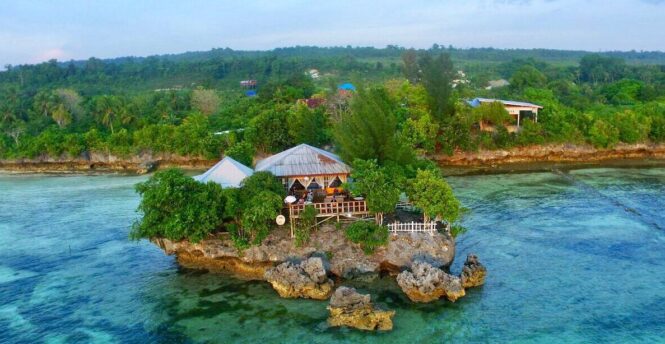
If you’ve ever wondered what the ultimate underwater playground looks like, the Wakatobi islands in Southeast Sulawesi answer that question.
What sets it apart
- The marine biodiversity here is mind-blowing: around 942 fish species and over 750 coral reef species. That’s not a misprint.
- Because it’s remote and less developed for mass tourism, the underwater world feels untouched—quiet dive sites, minimal motorboat noise, and pure coral walls.
- On land, you’ll find the Bajo people, sea-nomads whose lives are entwined with the reef and the tides. Their stories become part of the travel narrative.
How to soak it in
Base yourself on one of the main islands like Wangi-Wangi, then take day trips to remote snorkel spots. Evening? Sit on the beach and watch the stars come out without light pollution.
Did you know?
The term “Wakatobi” is actually an acronym formed from the four main islands: Wangi-Wangi, Kaledupa, Tomia, and Binongko.
In other words, the name is as much a code as a destination.
3. Sumba Island
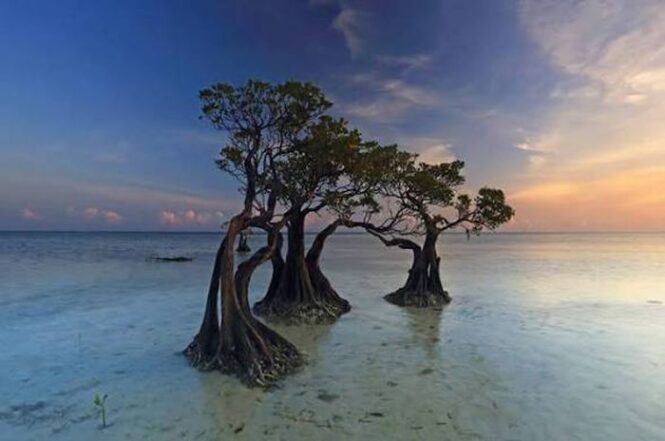
Sumba is the sleeper hit of Eastern Indonesia. It doesn’t shout the way Bali does, but if you listen to the silence, the space, and the authenticity speak volumes.
Why it’s worth the detour
- One moment you’re on a white-sandy beach, the next you’re exploring traditional villages with high-peaked wood-thatched roofs and clan traditions you won’t find elsewhere.
- Surf culture, yes, but in a way that feels raw rather than branded. Tarimbang Bay, for example, offers serious waves without the resort crowd.
- It’s a place to slow down: horse rides at sunrise, locally-woven ikat fabrics that tell stories, villagers who’ll invite you in for a cup of strong coffee.
Layout of a sample day
| Time | Activity |
| Dawn | Ride a horse along a deserted beach |
| Mid-morning | Visit a weaving workshop and meet local artisans |
| Afternoon | Chill in a village café, people-watch |
| Sunset | Walk to Walakiri Beach and watch fireflies |
Pro tip: Accommodation is less flashy than Bali, but that’s part of Sumba’s charm. Choose a boutique eco-lodge. Respect local traditions: ask permission before photographing ceremonies or village life.
Practical travel notes
- Getting around: While Bali has airports, resorts, and roads built for tourists, the eastern islands often require flights to smaller airports or boat transfers. Schedule flexibility pays off.
- Season: Dry seasons (approx May–Oct) offer the best conditions for sea and sky. Rainy months bring lush landscapes, but maybe some down days.
- Respect for nature: These islands aren’t Disneyland. Many communities practice traditions very different from Bali’s tourist corridor. Mind your behavior (dress modestly inland, ask local rules).
- Tech and comfort: Wi-Fi may be patchy. Roads can be rough. But honestly, that’s part of the enchantment. Let go a little of the “always connected” mindset.
Putting it all together
Imagine starting your journey in Bali, then heading east into the unknown: you charter a yacht, drift past golden shores and volcanic peaks, anchor in still-water bays, and snorkel till your arms float like jelly. You wake up to fewer tourists and more chance encounters, a village dog, a spice-smoke harbor, and a coral reef that glows.
The islands of Flores/Komodo, Wakatobi, and Sumba don’t deliver cookie-cutter luxury; they offer something rare: travel that reminds you of purpose. You came to rest, but instead, you come away changed.
If you’re looking for a version of paradise that feels authentic rather than staged, these eastern islands will change the way you see Indonesia. Bring your camera, but give equal space to slow moments and quiet observation. Leave the tourist trail behind, and you’ll find the kind of beauty that doesn’t need filters or crowds.
In summary: yes, Bali is beautiful, but it’s only half the story. The eastern islands of Indonesia rewrite what paradise means. They ask for a little more effort, but reward with something deeper: oceans unspoiled, cultures unfiltered, mornings where you’ll remember exactly why you travel. Trust yourself. The adventure is east.
 Imagup General Magazine 2025
Imagup General Magazine 2025
